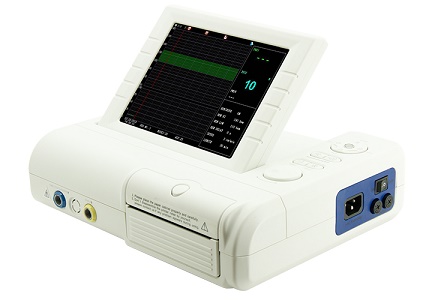CTG Machine is a technical means of recording the fetal heartbeat and the uterine contractions during pregnancy. The machine used to perform the monitoring is called a cardiotocograph, more commonly known as an electronic fetal monitor (EFM).
Fetal monitoring was invented by Doctors Alan Bradfield, Orvan Hess and Edward Hon. A refined (antepartal, non-invasive, beat-to-beat) version (cardiotocograph) was later developed for Hewlett Packard by Konrad Hammacher.
CTG monitoring is widely used to assess fetal wellbeing.[1] A review found that in the antenatal period (before labour) there is no evidence to suggest that monitoring women with high-risk pregnancies benefits the mother or baby although research around this is old and should be interpreted with caution.[1] The same review found that computerised CTG machines resulted in lower numbers of baby deaths than the traditional CTG machines (as shown in picture). More up-to-date research is needed to provide more information around this practice.[1]
CTG monitoring can sometimes lead to medical interventions which are not necessarily needed.[1] Fetal vibroacoustic stimulation (sound played to the unborn baby through the mother’s abdomen) has been used to provoke the baby into being more active.[2] This can improve their CTG monitoring so that the mother does not have to be monitored for as long.[2] However the safety of this technique has not been fully assessed; hearing impairment, stress reactions and other effects should be investigated before this technique is used widely.







Reviews
There are no reviews yet.